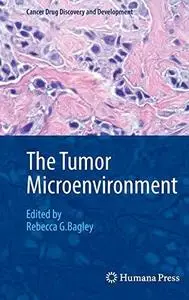The Tumor Microenvironment By Annamaria Rapisarda, Giovanni Melillo (auth.), Rebecca G. Bagley (eds.)
2010 | 770 Pages | ISBN: 1441966145 | PDF | 13 MB
2010 | 770 Pages | ISBN: 1441966145 | PDF | 13 MB
The field of cancer biology and developmental therapeutics is continually evolving as new methodologies are developed and new targets are discovered. Although multiple therapeutics directly target the malignant cells these drugs rarely prevent recurrence of disease or the progression of metastasis. The complex biology of tumors presents challenges in designing treatments that will eliminate the malignant cells as well as the supporting network of vasculature and stroma that allows for the comparison of tumors to developing organs in embryos. In addition to blood vessels and malignant cells, tumors consist of fibroblasts, immune and inflammatory cells, and a myriad of proteins that comprise the extracellular matrix. Effective eradication of malignant disease requires therapeutic strategies that factor in targeting the tumor microenvironment. In the past decade, a new class of anticancer drugs has emerged that interferes with tumor angiogenesis; however the clinical benefit from treatment with the first generation antiangiogenic agents added to the standard of care is often modest. Thus, there remains a critical need to understand the tumor microenvironment and to develop anti-cancer therapies that address this aspect of malignant disease. The first edition of The Tumor Microenvironment is intended to give a current perspective on the role of the tumor microenvironment in malignant progression and detail strategies for novel therapies directed towards the cellular matrix. This book explores the many biological and physiological aspects of the tumor as a tissue and includes chapters on the variety of cells that influence tumor growth and spread as well as the cell-associated and soluble proteins that can promote invasion and metastasis. Several chapters describe endothelial cells and pericytes that form tumor vasculature. Insights into the role of progenitor and stem cells are included. The contribution of the supporting stroma is addressed in addition to cell-cell signaling and cell-matrix interactions. Additional chapters describe the influence of infiltrating cells of the immune system on tumor growth. The Tumor Microenvironment is the definitive text detailing cutting edge research by experts in the field and will be a valued resource in the study of this important area of cancer biology for many years to come.



